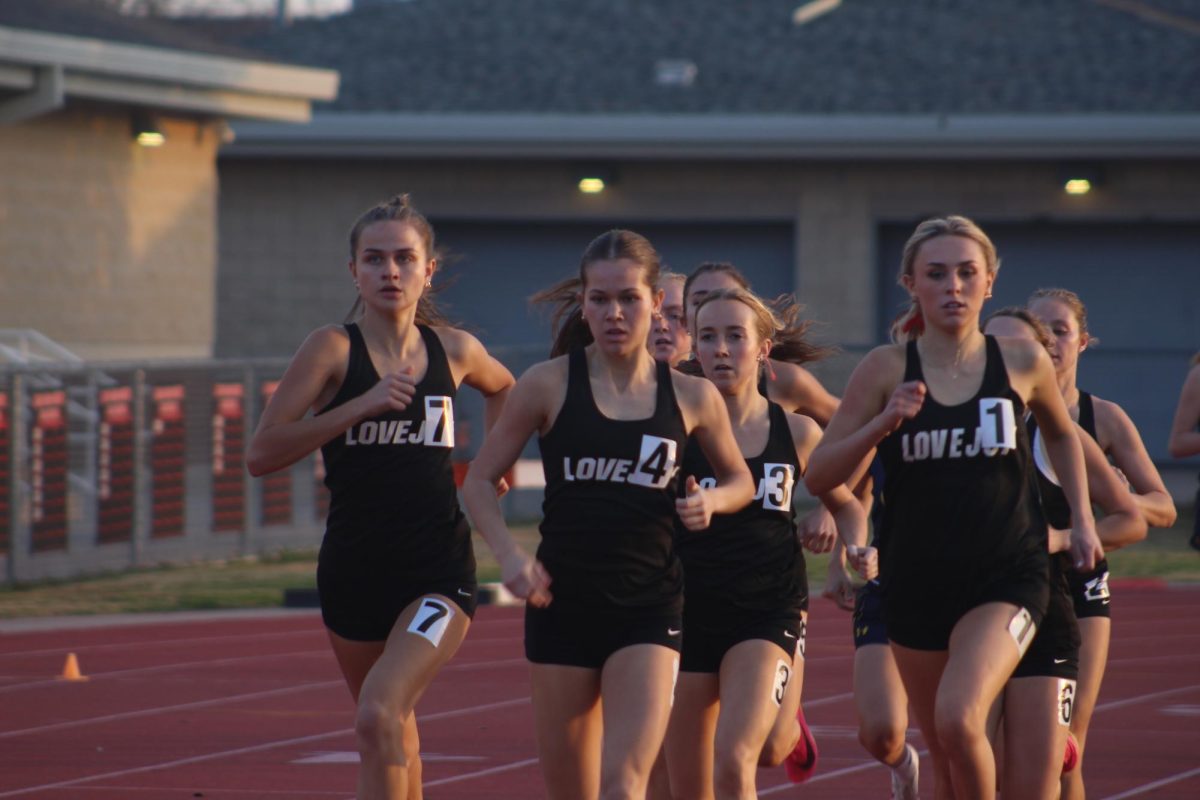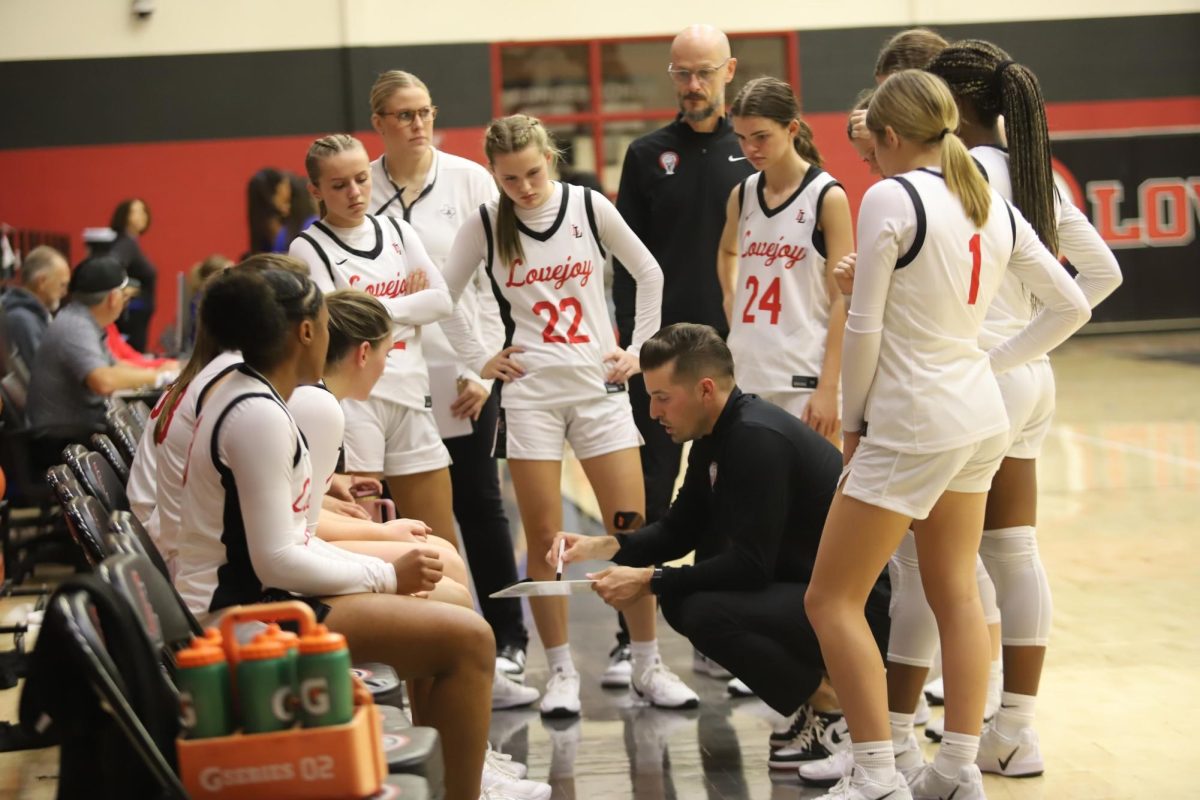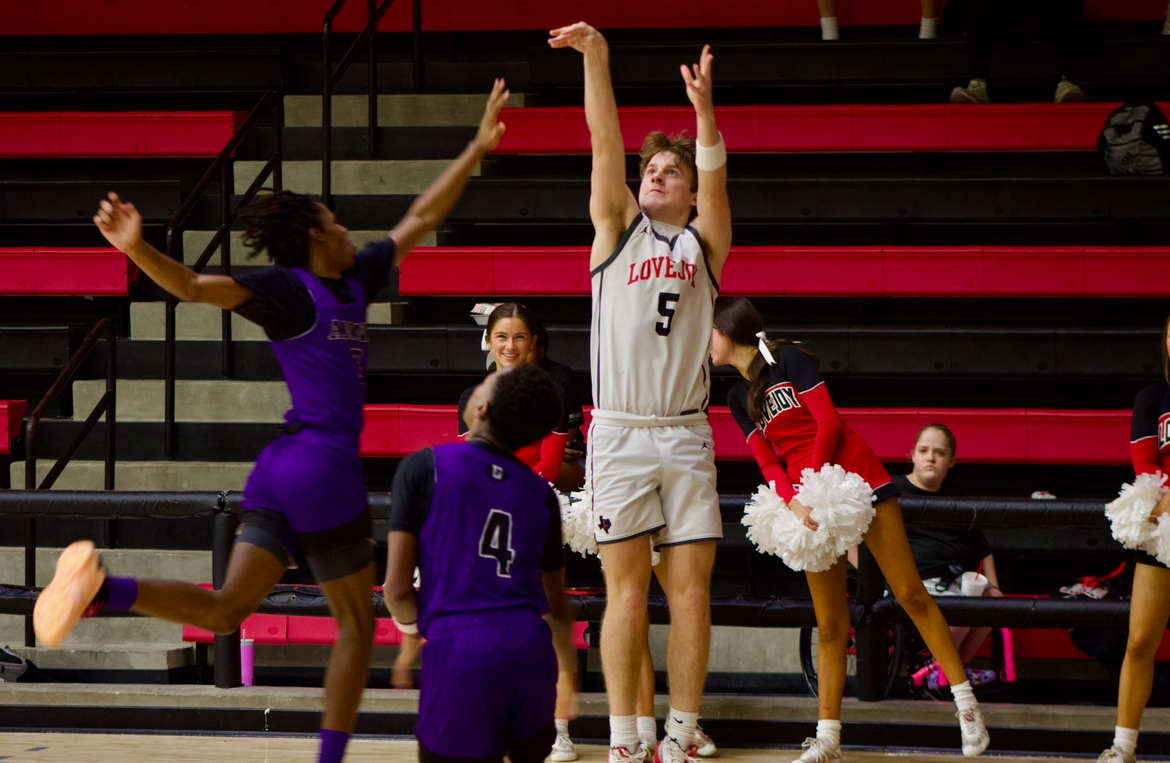It’s a tie game with two minutes left. In the NBA, there would be a minimum of five changes in possession, but most likely there would be more than that.. In college, there would be a minimum of three changes of possession, but most likely there will be five or six. In high school, the same team could hold the ball for the entire two minutes.
“When games are close and there are only a couple minutes left, you see coaches holding the ball longer and stalling,” head basketball coach Kyle Herrema said. “You don’t see it all the time, but you do see it occasionally and it is a strategy that coaches employ down the stretch.”
The NBA employs a 24-second shot clock and college games have a 35-second shot clock, while in Texas, high schools have no regulations regarding how long a team can remain in possession of the basketball.
“They definitely need a shot clock in high school,” Dallas Mavericks center Brandan Wright said. “Their basketball is getting really watered down because both teams just holding the ball and dragging out possessions. The quality of play is poor and both teams just run a flex-offense for 60 seconds or so.”
However, Herrema believes that not having a shot clock is good for building team chemistry in high school.
“I personally like the idea of not having a shot clock,” Herrema said. “I think it leads to not having a more individual type game. Typically when it gets down to the end of the shot clock, in the pros and in college, it comes down to which individual can get to the rim first. Not having a shot clock instills more of the team element in the games at the high school level.”
Besides removing some of the individualism from the game, a shot clock also helps to level the playing field.
“There are times when you have a lesser team against a more athletic team, the lesser team tries to play stall-ball, which is not always pretty, but it evens the game out,” Herrema said.
Besides intentionally stalling, the absence of a shot clock benefits less skilled teams in other aspects.
“If I have an athletic team, they can get a shot off a lot quicker,” Herrema said. “For a team that’s not as athletic, they may have to work the ball around more to expose the defenses weakness, which would chew more time off the clock inadvertently. That’s why a shot clock would favor the more athletic teams, since their possessions usually don’t go beyond the 24 or 35 seconds typically allotted with a shot clock.”
A shot clock affects the defense just as much as the offense.
“I can’t imagine having to play defense until the other team shot the ball,” Wright said. “It would be pretty tough to play 35 seconds of good defense in the NBA, so I think that high schools should at least incorporate the college shot clock, 35 seconds, even though I still think that’s too much time.”
Most fans would favor the implementation of a shot clock.
“As a basketball fan I hate to see how high school games are being played,” Wright said. “Low possession games aren’t nearly as fun to watch or play as a faster paced game.”
Coaches don’t necessarily agree, though.
“From a coaching standpoint and a competitive advantage standpoint, I think not having a shot clock works well for us even though it substantially slows down the game,” Herrema said.
Players tend to agree with Herrema.
“We take our time on offense, so not having a shot clock helps us,” senior Mitch Compton said. “That is, until the other team decides to go to a more extreme stall-ball style.”
Even though Compton likes not having a shot clock, he is cognizant that there are flaws with the system.
“Not having a shot clock can be frustrating when other teams, like McKinney North, just hold the ball and waste a bunch of time,” Compton said.
The McKinney North game Compton referenced was a 42-25 win for the Leopards.
“When we played McKinney North the second time around this year, their best player was hurt, and they felt like the only way they could beat us was to shorten the game,” Herrema said. “To do that, you just hold the ball longer, which decreases the possessions each team gets and increases the significance of each shot.”
Implementing a shot clock at the high school level would add additional off the court issues.
“It’s actually really hard to find qualified and skilled clock keepers,” Herrema said. “Having to find someone for the shot clock on top of the game clock would be another burden for the teams.”
Taking into account all the pros and cons of having a shot clock, Compton recognizes that not having one can be a hinderance to a higher level of basketball.
“Overall, I think a shot clock would be better in high school,” Compton said. “We would play the game more like it should be played versus just holding the ball and keeping the game a low scoring game.”








